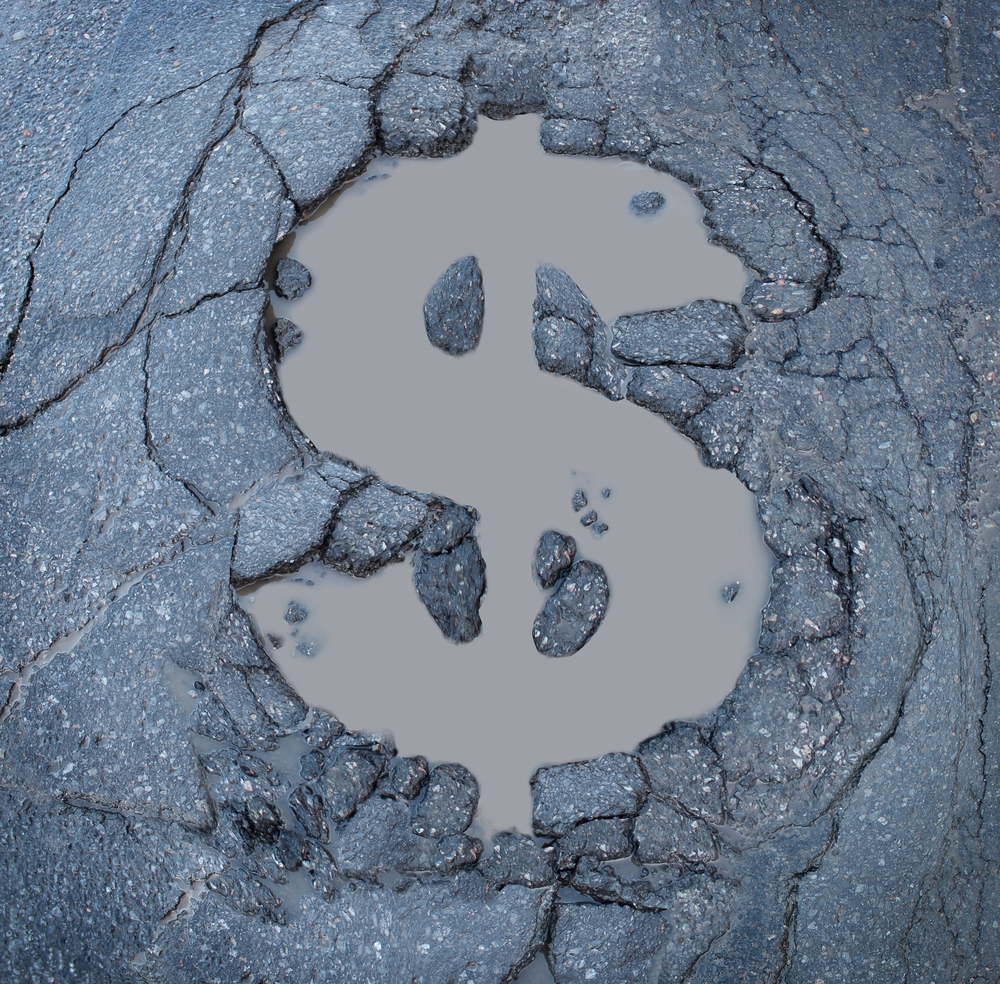More Money for Rocky Roads?
Sales Tax Increase Goes to a Vote

Santa Barbara voters will decide this November whether to increase the city’s sales-tax rate by one cent — from 7.75 percent to 8.75 percent — to fund a ballooning backlog of basic street repair and other urgent infrastructure needs. With councilmembers Frank Hotchkiss and Randy Rowse dissenting, the City Council voted last Tuesday to place the measure on the 2017 general election ballot, which will require a simple majority to pass.
City officials estimate the tax increase would bring in an extra $22 million a year to help cover the massive gap between the current annual cost to maintain roads and facilities ($25 million) and how much is actually budgeted for such work ($4 million). The shortfall is a direct result of the dissolution five years ago of Santa Barbara’s Redevelopment Agency, which siphoned $100 million away from the city.
City Engineer Brian D’Amour told the council that road repair and repaving is the most pressing need. Right now, he said, Santa Barbara’s main “arterial roads” are treated and patched when needed. Residential streets receive little to no attention. Sixty-four percent of all roads are considered “poor, at risk, or failed.” While the revenue to fund repairs has remained steady over the last 15 years, the cost of asphalt has risen 161 percent. Slurry sealing, a Band-Aid fix typically carried out in six-year cycles, costs $16,000 a block, said D’Amour. But it doesn’t address deeper structural issues. After a while it’s like painting over dry rot, he explained. The price tag for a full repaving is $80,000.
The extra revenue would also help cover the cost of a new police station, sorely needed by the department, D’Amour went on. The current building doesn’t meet basic seismic standards and is far too small to accommodate a staff of 212. When it was constructed in 1959, staff numbered 85. Recent estimates put the price of a new building at $70 million. Fire stations on Sola Street and near Sheffield Reservoir would also receive upgrades and renovations. The One Thousand Steps beach access would be repaired, as would downtown and Milpas sidewalks and streetscapes.
A survey conducted last spring of 800 Santa Barbara voters found that 64 percent of them would “definitely or probably vote” for a ballot measure to increase the sales tax to fund deferred maintenance projects. The majority of those polled also supported a full-cent increase over a half-cent, and most favored no sunset clause to the measure.
Assistant City Administrator Nina Johnson said last Tuesday that an estimated 40 percent of the extra revenue would be paid by tourists and other visitors to the city. The tax would not apply to basic purchases, such as groceries and prescription drugs. Johnson noted that Santa Barbara’s current sales tax rate sits below those of Santa Monica (10.25 percent), Pasadena (9.25 percent), and Santa Cruz (9 percent). Santa Maria raised its sales tax to 8 percent in 2012. Since that year, Santa Barbara’s City Council has twice tried and twice failed to reach a supermajority 5-2 consensus to place a sales tax increase on the ballot.
In his arguments last week, Councilmember Hotchkiss pushed for a special tax specifically for funding infrastructure, rather than a general-purpose tax. That would guarantee the revenue was spent as it was originally intended, even under the control of future councils. “There’s no doubt this council has every good intention,” he said, “but it only has a lifespan of six months.” Councilmember Rowse said he felt uneasy drafting a measure without a sunset clause. He was also reticent about the concept of any tax hike but acknowledged it would help fund “the things that we sell in this town — the aesthetic, the cleanliness.”
On the issue of accountability, Mayor Helene Schneider said she took comfort in the robust language built into the measure that would require regular audits, public disclosure of spending, and the creation of a citizen oversight committee to actively monitor how the revenue is spent. She stressed the city has taken steps to reduce costs since the Recession, cutting staff by 42 positions, and will be mindful of how every new tax dollar is spent. This is the right proposal at the right time, she said. “I certainly hope it passes.”


